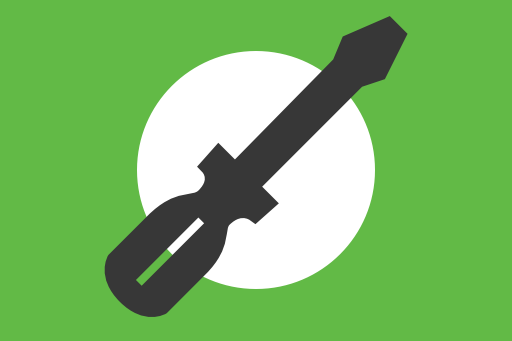- 1HTML Forms
- 2HTML form Tag
- 3HTML Input Types
- 4HTML Labels and Placeholders
- 5HTML Select Dropdown
- 6HTML Checkbox
- 7HTML Radio Buttons
- 8HTML Textarea
- 9HTML Submit and Reset Buttons
- 10HTML Form Validation
- 11HTML Required Fields
- 12HTML Input Pattern Attribute
- 13HTML min and max Attribute
- 14HTML Form Action and Method
- 15HTML Fieldset and Legend
- 16HTML Form Advanced Controls
- 17HTML Date Picker
- 18HTML Range Slider
- 19HTML Color Picker
- 20HTML File Upload
- 21HTML Datalist
- 22HTML Autofocus and Autocomplete
Introduction to HTML Forms with Advanced Controls
Date, Range, Color, File, Datalist
HTML Forms with Advanced Controls: Enhancing User Experience
Modern HTML doesn’t stop at text boxes and checkboxes. It introduces user-friendly inputs like date pickers, sliders, color selectors, and more — all without JavaScript. These advanced controls streamline data entry and improve form interaction.
Date Picker
Use <input type="date"> to let users select a date from a calendar widget.
<label for="birthday">Choose your birthday:</label><br>
<input type="date" id="birthday" name="birthday">
Choose your birthday: [ 📅 Select Date ]
This ensures date values are formatted correctly and eliminates manual errors.
Range Slider
Let users choose a numeric value within a range using <input type="range">.
<label for="rating">Rate the fruit (1 to 5):</label><br>
<input type="range" id="rating" name="rating" min="1" max="5">
Rate the fruit: [ ●——— ] (drag to select value)
You can also add the step attribute to control intervals.
Color Picker
Pick a color using a visual color palette via <input type="color">.
<label for="favColor">Pick your favorite color:</label><br>
<input type="color" id="favColor" name="favColor">
Pick your favorite color: [ 🎨 ]
The selected color is submitted as a hex value like #ff0000.
File Upload
Allow users to upload files (images, documents, etc.) with <input type="file">.
<label for="upload">Upload your fruit photo:</label><br>
<input type="file" id="upload" name="fruitPhoto">
Upload your fruit photo: [Choose File] No file selected
Note: Always set enctype="multipart/form-data" in your <form> if you're handling files.
Datalist for Suggestions
<datalist> offers predefined suggestions while still allowing free-form input.
<label for="fruit">Type or choose a fruit:</label><br>
<input list="fruits" id="fruit" name="fruit">
<datalist id="fruits">
<option value="Apple">
<option value="Banana">
<option value="Cherry">
</datalist>
Type or choose a fruit: [ A▼ ]
(suggestions: Apple, Banana, Cherry)
This helps users while still allowing custom entries not listed.
Autofocus and Autocomplete
Use autofocus to automatically focus on an input when the page loads, and autocomplete to let browsers suggest previously entered values.
<input type="text" name="name" placeholder="Hello World" autofocus autocomplete="on">
[ Hello World ] ← This field is focused on page load
Autofocus improves usability for single-input forms. Autocomplete boosts speed for frequent users.
Full Form with Advanced Inputs
<form action="/submit-advanced" method="post" enctype="multipart/form-data">
<label for="fruit">Favorite Fruit:</label><br>
<input list="fruits" name="fruit" id="fruit" autocomplete="on" required>
<datalist id="fruits">
<option value="Apple">
<option value="Banana">
<option value="Cherry">
</datalist><br><br>
<label for="birthday">Birthday:</label><br>
<input type="date" id="birthday" name="birthday" required><br><br>
<label for="rating">Fruit Rating (1–5):</label><br>
<input type="range" id="rating" name="rating" min="1" max="5"><br><br>
<label for="color">Color You Associate with It:</label><br>
<input type="color" id="color" name="fruitColor"><br><br>
<label for="file">Upload Fruit Image:</label><br>
<input type="file" id="file" name="fruitImage"><br><br>
<input type="submit" value="Submit">
</form>
(advanced form with datalist, date picker, range, color, file input)
Best Practices
- Use advanced inputs to reduce typing and improve accuracy
- Combine
required,autocomplete, andautofocusto boost UX - Label everything clearly — especially for visually distinct controls
Summary
HTML’s advanced input types bring interactivity and structure with minimal effort. You’ve now learned how to:
- Use
date,range,color, andfileinputs - Offer suggestions with
datalist - Control user focus and memory with
autofocusandautocomplete
What’s Next?
Let’s complete your form-building journey by exploring Form Styling with CSS — transforming structure into polished, professional UI.








Comments
Loading comments...